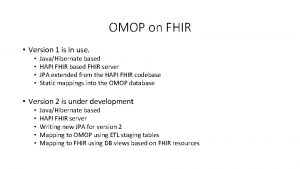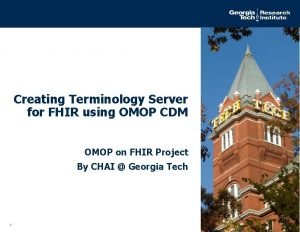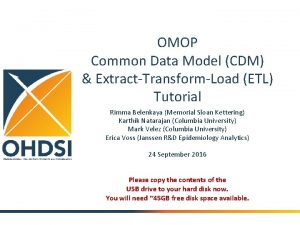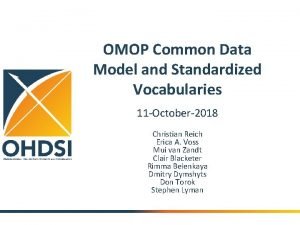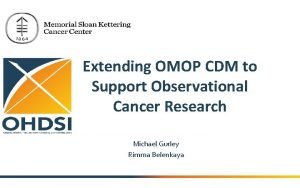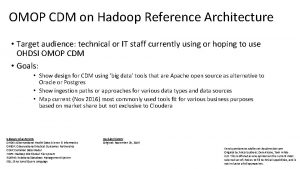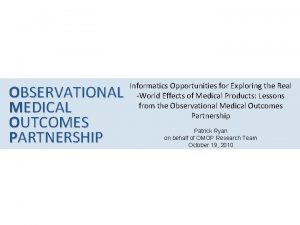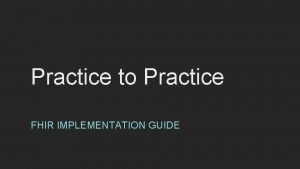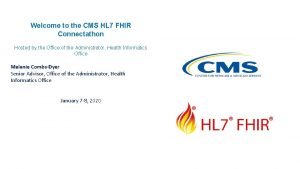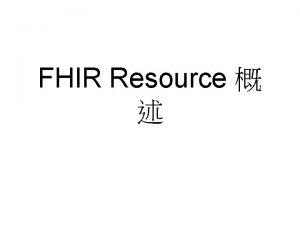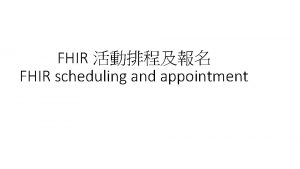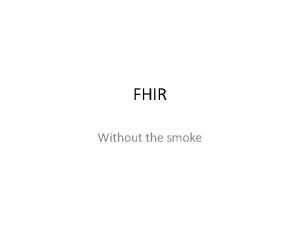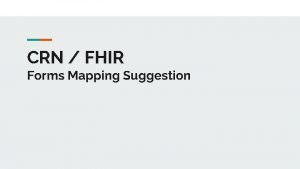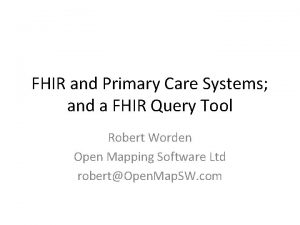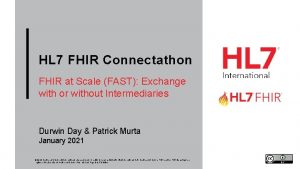OMOP on FHIR Version 1 is in use










- Slides: 10

OMOP on FHIR • Version 1 is in use. • • Java/Hibernate based HAPI FHIR based FHIR server JPA extended from the HAPI FHIR codebase Static mappings into the OMOP database • Version 2 is under development • • • Java/Hibernate based HAPI FHIR server Writing new JPA for version 2 Mapping to OMOP using ETL staging tables Mapping to FHIR using DB views based on FHIR resources

OMOP on FHIR use cases • Instant FHIR server if you have an OMOP data repository • Allows FHIR applications to be run on existing OMOP data • Allows FHIR interoperability resources to be accessed. • Can convert FHIR enabled clinical data into an OMOP format. • Transfer FHIR equipped EMR data to an OMOP CDM instance • Transform a FHIR equipped Clinical Data Warehouse to an OMOP CDM instance.

FHIR to OMOP • ETL Staging Tables • Uses existing ETL processes to persist data from FHIR into OMOP CDM • FHIR server controls the transaction. • write resources to appropriate staging tables • Calls a procedure to persist the records when write is complete. • caveats • No MPI functionality currently exists. Data are linked by ”person_source_value” or new person records are created. • For multiple inbound connections, each FHIR source needs to be segregated into separate omop schema or have a way of tagging “*_source_value” values to maintain uniqueness. For example, prepend ’ATL 1_’ to the source_values from the ATL 1 FHIR server.

OMOP to FHIR • Access through views mapping the OMOP schema to FHIR resources. • Special view create to combine observation and measurement into a single view representing observation FHIR resource. • Extended OMOP schema to add demographic information ( f_person table )

ETL Staging Tables • The ETL staging tables are designed to be similar to potential source datasets. This simplifies the import task to be just mapping to the staging tables. • The mapping to OMOP concepts and the Common Data Model are accomplished by a set of stored procedures in the database. • The tables are linked together using the source values for the person, visit and provider. • Medical data values are used in their original code sets.



Stage to OMOP mapping • Stored procedures contain the logic to insert data into proper tables. • A record in the stage table may map to one or more OMOP tables. • For example, an ICD 9 code may map to a Condition, Procedure, Measurement or Observation. • Stored procedures are built to process both records at the individual patient level and bulk data files.

OHDSI Face-to-Face Meeting • Demonstrated dissemination of OMOP data. • Components developed/used • Client Web Application • EMR – simulated using GT-FHIR server • OHDSI Web. APIs • GT-FHIR used for the EMR simulation • Release 1 • OMOP v 5 • DSTU 2

I want to get involved • OHDSI FHIR working group http: //www. ohdsi. org/web/wiki/doku. php? id=projects: workgroups: f hir-wg
